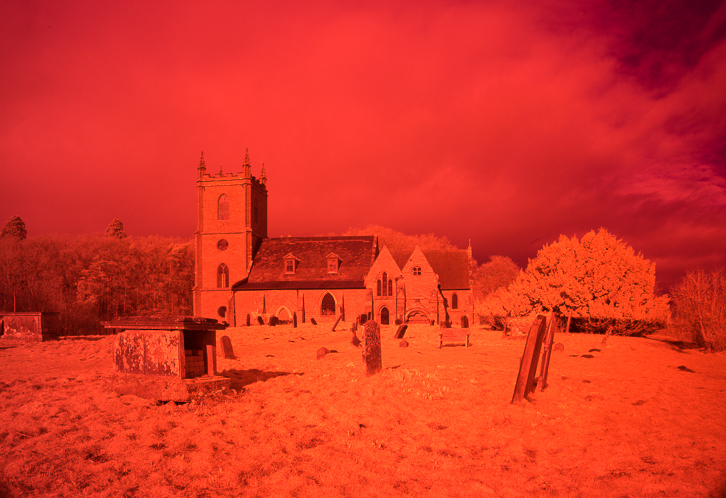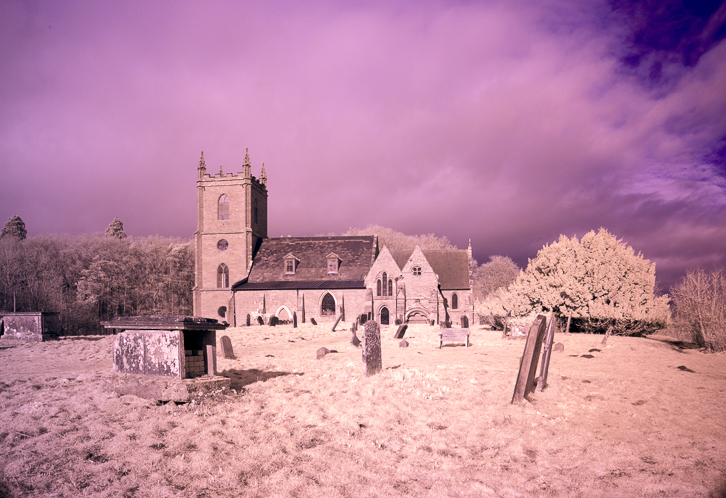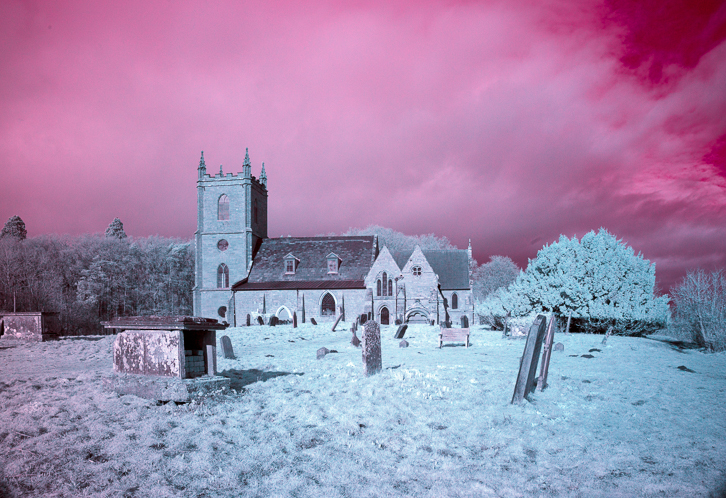Comparative images for a range of Front-of-lens IR filters
Clive R. Haynes FRPS
This test uses an Ultra Violet (UV) filter.
Although not a common choice the result is included here. When making the pictures using the the various filters, a UV filter was available. Why not see what happens?
No specification for this filter in terms of wavelength was provided, except the information that this filter responds to UV at one end of the spectrum and IR at the other with a huge 'dip' in between to exclude the (human) 'visible spectrum'.
The result is interesting and the intermediate step of 'Levels' > 'Auto' is included.


With Adjustment Layer for 'Levels' > Auto

With Adjustment Layers for 'Levels' > Auto + 'Channel Swap'

With Adjustment Layers for 'Levels' > Auto + 'Channel Swap' + 'Black & White'
Comments:
This test revealed a RAW image which is strongly red.
After applying 'Levels' > 'Auto' an interesting apricot tone with a magenta cast extending to light magenta and blue was revealed, being the unusual combination of IR and UV.
After 'Channel-Swapping', the colour tones were reversed, now veering from an acid-looking magenta to light cyan..
The black & white result is acceptable and not too dissimilar to that produced by the 'full spectrum' with no filter attached.